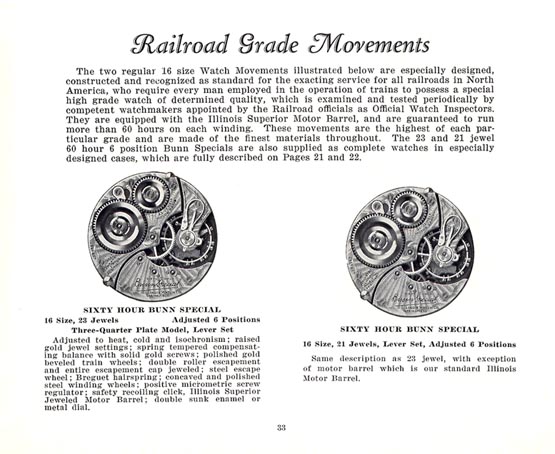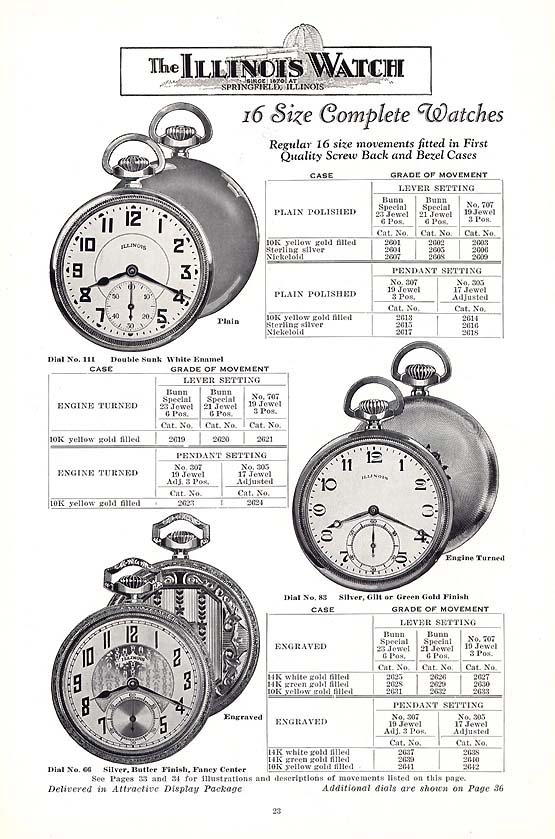
| WWT Shows | CLICK TO: Join and Support Internet Horology Club 185™ | IHC185™ Forums |

|
• Check Out Our... • • TWO Book Offer! • |
Welcome Aboard IHC185™  Internet Horology Club 185
Internet Horology Club 185  IHC185™ Discussion Site Main Page
IHC185™ Discussion Site Main Page  Open to the World RESEARCH FORUMS
Open to the World RESEARCH FORUMS  Illinois Watch Company Research Forum
Illinois Watch Company Research Forum  Introducing the Complete Factory Cased Bunn Special Without a Bunn Special Case?
Introducing the Complete Factory Cased Bunn Special Without a Bunn Special Case?
 Internet Horology Club 185
Internet Horology Club 185  IHC185™ Discussion Site Main Page
IHC185™ Discussion Site Main Page  Open to the World RESEARCH FORUMS
Open to the World RESEARCH FORUMS  Illinois Watch Company Research Forum
Illinois Watch Company Research Forum  Introducing the Complete Factory Cased Bunn Special Without a Bunn Special Case?
Introducing the Complete Factory Cased Bunn Special Without a Bunn Special Case?Go  | New Topic  | Find-Or-Search  | Notify  | Tools  | Reply to Post  |  |
Interesting deduction Mike. Now I gotta reload the ole mental data base... as if there wasn't too much Bunn Spl data up there as is was. | ||||
| IHC President Life Member |
Great points Mike, it is important for us to realize what they were doing in effort to market their left-over obsolete inventory. They were after all just trying to sell watches. It is amazing today for us to realize the fact that as Mike stated above they still had an excess inventory 18-size 21-Jewel Bunn Special movements in the vault during that 1928-29 time frame that we are focusing on in these posts. In the image below we see the top half of page 34 from the 1928-29 catalog. It is of considerable interest to note the 18-size 21-Jewel Bunn Special movements are only presented as... "high-grade, accurate and dependable timepieces" ...with no reference to the fact that these were marketed as Railroad Grade movements prior to the 1920 changes in time-service requirements. Below, the 18-size Bunn Specials were also close-out items...  | |||
Great post Lin! and thanks so much for sharing these pages. I would make mention, Also, to note that nowhere do they say the 18 size Bunn Special will be offered as a "Complete (Factory Cased) Watch" as they are offering to do so with the 16 size NON 60 Hr. Bunn Specials. Note also, below, on page 33 from the same 1928-29 Hamilton-Illinois catalogue that the Movements that ARE 60 Hr. , both in 21 and 23J are STILL available as a movement only... as well as cased. This page, clearly disproves the Illinois book statement (on page 49) that as of 1929 Bunn Specials were no longer offered as a movement only. Here we have proof to the contrary. I think it makes sense that great marketing would say, sell the watches any way you can. I think we can all agree that the Hamilton Watch Company (who was now in control) was a great marketer of watches. Very interesting to say the least! Happy "New INformation" Hunting! Sixty-Hour 23J and 21J Movement Only in 1928-29 Catalog...  | ||||
Well, well, well. I bought a model 9 Bunn Special shown in that topmost catalog illustration in Mike's initial post. Lucky estate sale find.That same case! (serial no. of movement 4,500,389 dates to 1924). I still own movement, case was well worn but traded away. Now I get to look for a similar case again!! | ||||
| Powered by Social Strata |
| Your request is being processed... |
|
Welcome Aboard IHC185™  Internet Horology Club 185
Internet Horology Club 185  IHC185™ Discussion Site Main Page
IHC185™ Discussion Site Main Page  Open to the World RESEARCH FORUMS
Open to the World RESEARCH FORUMS  Illinois Watch Company Research Forum
Illinois Watch Company Research Forum  Introducing the Complete Factory Cased Bunn Special Without a Bunn Special Case?
Introducing the Complete Factory Cased Bunn Special Without a Bunn Special Case?
 Internet Horology Club 185
Internet Horology Club 185  IHC185™ Discussion Site Main Page
IHC185™ Discussion Site Main Page  Open to the World RESEARCH FORUMS
Open to the World RESEARCH FORUMS  Illinois Watch Company Research Forum
Illinois Watch Company Research Forum  Introducing the Complete Factory Cased Bunn Special Without a Bunn Special Case?
Introducing the Complete Factory Cased Bunn Special Without a Bunn Special Case?©2002-2025 Internet Horology Club 185™ - Lindell V. Riddle President - All Rights Reserved Worldwide


_.jpg)